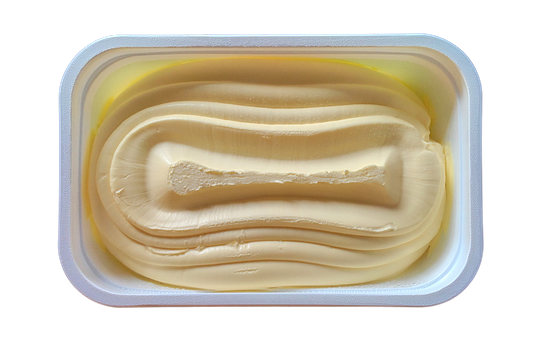 I remember when I was younger, my grandmother would tell us how much things had changed since she was young. She mentioned when they bought margarine, they had to knead in color tablets so it became a yellow, similar to butter.
I remember when I was younger, my grandmother would tell us how much things had changed since she was young. She mentioned when they bought margarine, they had to knead in color tablets so it became a yellow, similar to butter. I think the only thing I use margarine for anymore is for baking cookies, otherwise its butter all the way. I prefer the flavor of butter but I don't use much of it because I prefer my vegetables prepared in either Indian or Asian style.
In addition, the cost of butter and margarine are about the same out in the village so I figure I might as well pay for butter. I wanted to know more about margarine and discovered it has been around much longer than I would have guessed. A French chemist, Hippolyte Mege-Mouries, created the first Oleomargerine in 1869. He made a longer lasting and cheaper product out of beef fat churned with milk but it didn't take off until the Dutch got involved. The Dutch took the basic product and made improvements to it including dying it a lovely yellow, just like butter.
By World War I, margarine was made out of vegetable oils but its popularity took off during the depression took off because it was much cheaper than butter and more available especially during World War II. In fact, its popularity grew during the second part of the 20th century when people began shunning butter and lard in favor of vegetable oils.
The marketing of margarine created a rift between the dairy industry and margarine manufactures to the point that dairy farmers wanted margarine outlawed completely. Several states outlawed its sale completely while others outlawed the sale of yellow margarine and mandating only uncolored margarine. The margarine sold in those states was sold with a yellow dye so people could color it themselves. A few states required the product to be colored pink so people would know it was artificial.
About 20 years after the creation of margarine, the United States government passed laws covering everything from its production, packaging, and sale. In addition, the government required manufacturers to pay annual licensing fees and imposed a tax of two cents per pound. The tax part of the regulations were repealed in 1950.
The United States was not the only country to impose regulations on the manufacturing of margarine. The Canadian government banned all margarine from 1886 until 1946 except for World War I but Quebec prohibited it until 2008. Furthermore, the United States passed a law in 1923 prohibiting any additions to butter, even those that would make it more spreadable which made margarine more appealing since it was spreadable.
Nowadays, all sorts of margarine's are stocked on the shelves in the dairy section with butter only taking a small percentage of space. Who knew that a story by my grandmother would lead to my looking it up.
No comments:
Post a Comment